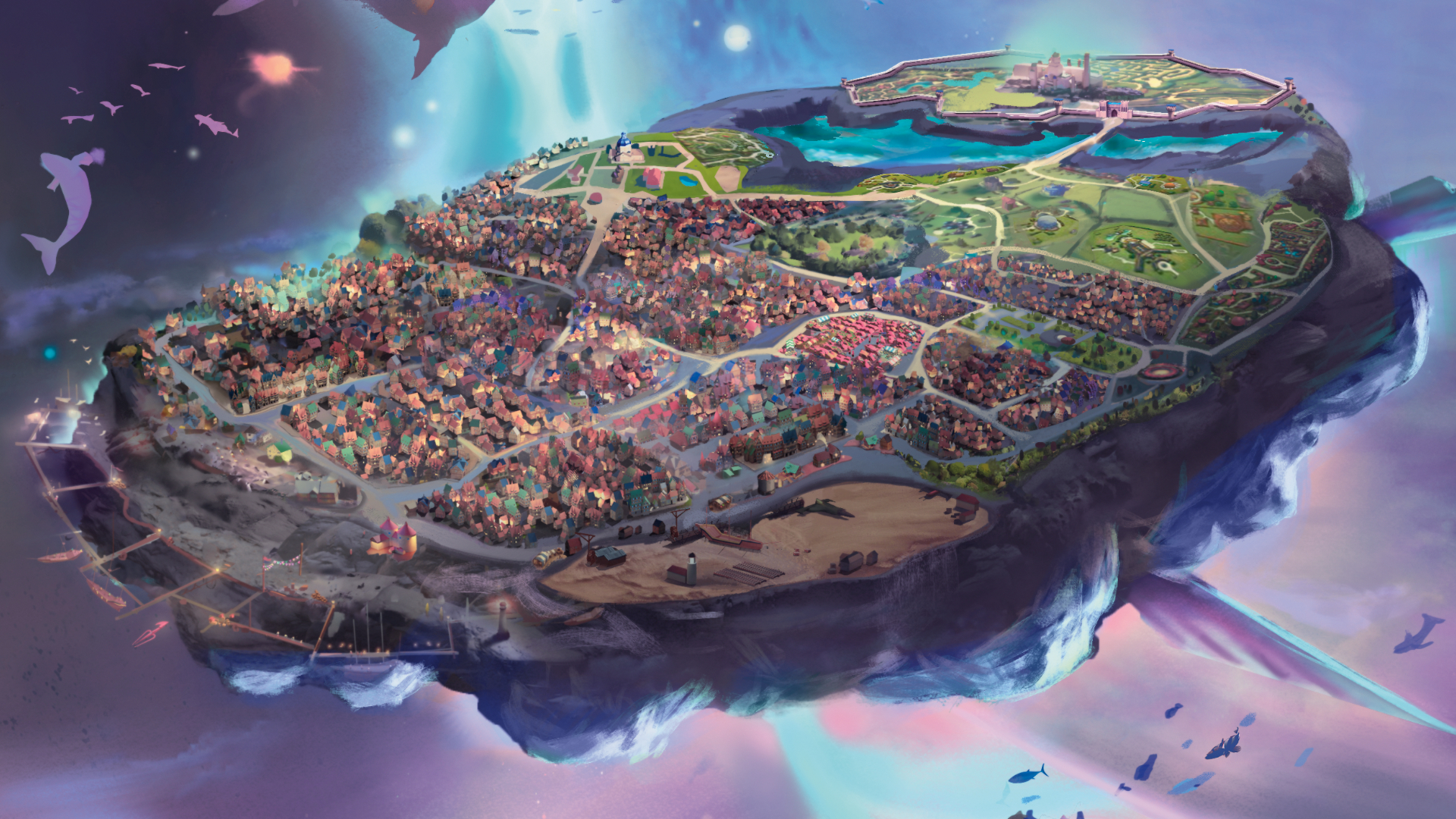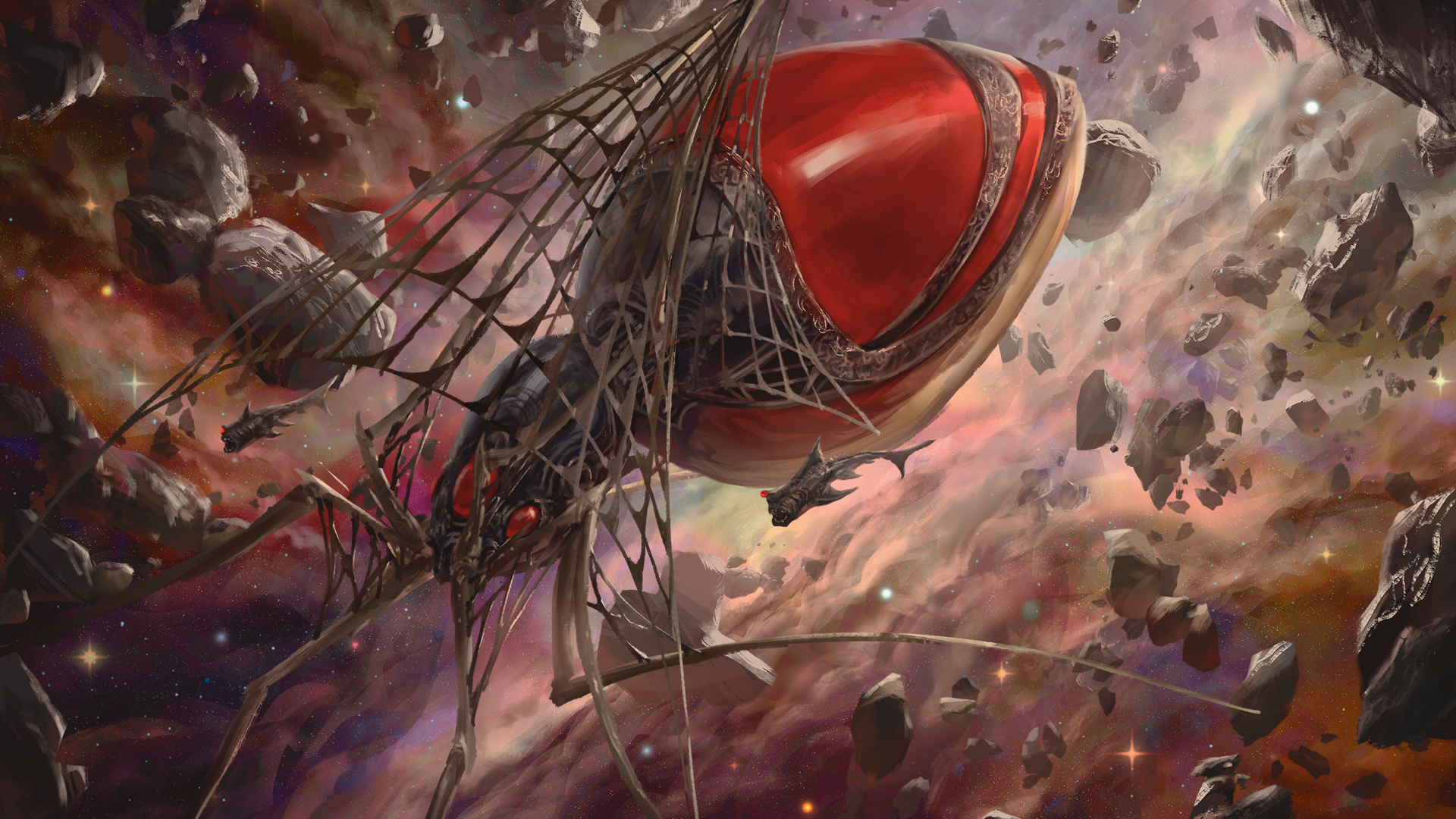Why Spelljammer: Adventures in Space changed key parts of the D&D setting
Certain elements of the setting's past have been jettisoned for Spelljamer: Adventures in Space, but there's a good reason for it

Spelljammer: Adventures in Space marks the return of a classic Dungeons and Dragons setting for the first time in years, but things have changed since it first hit shelves in 1989.
During a press briefing for the project ahead of its launch this August 16, lead designer Chris Perkins explained what's been updated (and what has stayed the same) for Spelljammer: Adventures in Space.
Axing crystal spheres

Perkins and Spelljammer go way back. To be precise, he hosted adventures set aboard the Rock of Bral (an asteroid city floating in space) when the setting originally launched more than 30 years ago.
"I've been a Spelljammer fan all the way back to the late '80s," he says. "I started running a Spelljammer campaign in 1990. It went until 1995, so I was very intimately familiar with Spelljammer and was eager to work on this project."
The setting obviously has a special place in Perkin's heart as a result, but don't mistake Adventures in Space for a rehash (for more detail, check out our guide to Spelljammer explained). Besides being split into three books with their own slipcase and Dungeon Master's screen to make for easier cross-referencing during a game, it tweaks Spelljammer lore to blend in with the updated cosmology of modern Dungeons and Dragons books.
It's a divergence from the original, but we think it fits elegantly into the current cosmology
Chris Perkins
Namely, its worldbuilding - which used to rely on 'crystal spheres' containing planets, a bit like that scene from Men in Black where the camera pulls back to reveal our galaxy held within a marble - now features something more like the system from Van Richten's Guide to Ravenloft. To be precise, each solar system in the new Spelljammer is bordered by mist or haze rather than a physical shell you can bump into. Make your way through this and you'll end up in an in-between realm.
However, this intermediary isn't the classic 'phlogiston' (a gas-like substance devoid of life) you would have found in the 1989 version. Instead, you'll enter the Astral Plane, a place of "thought-given form" from which you can hop into practically any other dimension.
Weekly digests, tales from the communities you love, and more
Updated cosmology

That's quite the departure, so why shake things up this radically?
"When we were building this version of Spelljammer, we were trying to hook it into the cosmology described in the [current] Dungeon Master's Guide," explains Perkins. "That includes not only the Astral Plane but this concept that the Astral Plane is like a sea, like an ocean where githyanki ships and mind flayer ships are zipping back and forth. In the [current Dungeon Master's Guide] we make no mention of crystal spheres [or] the phlogiston. We wanted to leverage what was there already and make the Astral Plane one of the key places we explore in this product. It's a divergence from the original, but we think it fits elegantly into the current cosmology. And the Astral Plane is really a much more exciting place, I think, for encounters to happen than the Phlogiston ever was."
It was fun to figure out how to make an ooze playable
Chris Perkins
With that in mind, Spelljammer: Adventures in Space may ruffle some fans' feathers because it edits a decent amount about the original setting. But it's not all change. The unique races Spelljammer is known for are still alive and well, for example. If anything, they've been expanded upon for the latest edition. Hippo-like giff, the hadozee (which are best described as a cross between monkeys and flying squirrels), insectoid thri-kreen, robotic autognomes, astral elves that have a lot in common with Star Trek's Spock, and oozy plasmoids.
For Perkins, being able to build upon the plasmoids was one of his favorite parts about Adventures in Space.
"There's something about playing an ooze that tickles me," Perkins says. "I've always been fond of dralacites, which is what plasmoids were called in the Star Frontiers game. I love them to death, I think they're so cute. Though I can't take credit for them ingesting dyes to change their color (that was actually a suggestion from Ben Petrisor, one of our designers on staff), it was fun to figure out how to make an ooze playable, to keep it from being too powerful. It can assume forms, but only to an extent - it can't just mimic another character like a doppelganger, it still looks like a blob. But it can extrude appendages and create pseudopods and squeeze through tight spaces... It was a design challenge."
We'll be able to see for ourselves when Spelljammer: Adventures in Space joins the best tabletop RPGs on shelves this August 16 in the USA and September 13 for Europe, the Middle East, and Africa.
For other tabletop adventures, don't forget to check in with our guide to the best board games, or chill out with these board games for adults. It's also worth taking a look at the top board games for 2 players if you want something new for games night.

I've been writing about games in one form or another since 2012, and now manage GamesRadar+'s tabletop gaming and toy coverage. You'll find my grubby paws on everything from board game reviews to the latest Lego news.


